![だ・です/だった・でした – Saying ‘to be’ in Japanese [JLPT N5]](http://hirakan.com/cdn/shop/articles/da-desu-datta-deshita_58bbc732-53fd-48da-83c7-4e477e7cc0b2.jpg?v=1760864506&width=1100)
だ・です/だった・でした – Saying ‘to be’ in Japanese [JLPT N5]
Share
Quick Summary
Meaning: The Japanese copula — the basic “to be.” It links a topic to a noun or a na-adjective to state identity, category, or description.
How to Use: Put だ (casual) or です (polite) after a noun or na-adjective; past forms are だった and でした.
Example:
- うちの猫は社長です。
- Uchi no neko wa shachou desu.
- My cat is the company president.
Overview
The copula in Japanese is the small but powerful word that works like English “to be.” In simple sentences, it connects a topic to what it is. With nouns and na-adjectives, Japanese uses だ (casual) or です (polite). Use です in most conversations to sound friendly and respectful; だ feels plain or blunt and is common with family and close friends, in notes to yourself, or in some written styles.
Key points for beginners:
- だ/です attach to nouns and na-adjectives to make a statement or definition.
- い-adjectives do not take だ. To be polite, you can add です after an い-adjective (for example, “big” → “big + です”).
- Non-past (no time marker) covers both “is” and general truths. Past is “was.”
Structure / Formation
Base Patterns
- N + だ (casual)
- N + です (polite)
- N1 は N2 + だ/です
- na-adj + だ/です
- N / na-adj + だった/でした (past)
- i-adj + です (polite non-past)
- i-adj-かった + です (polite past)
Nouns and na-adjectives: Non-past and Past
| Type | Casual (non-past) | Polite (non-past) | Casual (past) | Polite (past) |
|---|---|---|---|---|
| N / na-adj | 〜だ | 〜です | 〜だった | 〜でした |
Use these to state what something is, or how it is (with na-adjectives). In polite speech, prefer です/でした.
Example:
- このサンドイッチは変だ。
- Kono sandoicchi wa hen da.
- This sandwich is strange.
Example:
- 昨日はマラソンでした。
- Kinou wa marason deshita.
- Yesterday was a marathon.
い-adjectives with です
い-adjectives already work as predicates by themselves, so you do not add だ. To be polite, add です. For the polite past, change the adjective to i-adj-かった and add です.
| Form | Pattern |
|---|---|
| Polite non-past | i-adj + です |
| Polite past | i-adj-かった + です |
Example:
- このロボットは優しいです。
- Kono robotto wa yasashii desu.
- This robot is kind.
With Topics: N1 は N2 だ/です
This is the most common pattern for simple “A is B” sentences. Put the topic first, mark it with は, then add what it is.
Pattern:
N1 は N2 + だ/です
Usage Tips
- だ sounds casual or blunt. Use です with teachers, strangers, and in most public situations.
- Do not attach だ to i-adjectives. Use the adjective as is, or add です for politeness.
Example Sentences
- 私のおじいちゃんはアイドルです。
- Watashi no ojiichan wa aidoru desu.
- My grandpa is an idol.
- このロボットは友だちだ。
- Kono robotto wa tomodachi da.
- This robot is my friend.
- 昨日のカエルは有名でした。
- Kinou no kaeru wa yuumei deshita.
- The frog from yesterday was famous.
- 昨日のロボットは親切だった。
- Kinou no robotto wa shinsetsu datta.
- Yesterday’s robot was kind.
- うちの金魚は強いです。
- Uchi no kingyo wa tsuyoi desu.
- Our goldfish is strong.
Quick Practice
(Answers and explanations are right under this section.)
Multiple-Choice
-
Choose the correct polite sentence.
- A. うちのカメは店長です。 (Uchi no kame wa tenchou desu.)
- B. うちのカメは店長だです。 (Uchi no kame wa tenchou da desu.)
- C. うちのカメは店長とです。 (Uchi no kame wa tenchou to desu.)
- D. うちのカメは店長など。 (Uchi no kame wa tenchou nado.)
-
Choose the correct casual past sentence.
- A. きのうはピザまつりだった。 (Kinou wa piza matsuri datta.)
- B. きのうはピザまつりです。 (Kinou wa piza matsuri desu.)
- C. きのうはピザまつりでした。 (Kinou wa piza matsuri deshita.)
- D. きのうはピザまつりでも。 (Kinou wa piza matsuri demo.)
-
Which sentence is polite and correct with an i-adjective?
- A. このバナナは速いだ。 (Kono banana wa hayai da.)
- B. このバナナは速いでした。 (Kono banana wa hayai deshita.)
- C. このバナナは速いです。 (Kono banana wa hayai desu.)
- D. このバナナは速いとです。 (Kono banana wa hayai to desu.)
-
Choose the best sentence using the topic with time.
- A. 三時は晩ごはんの時間です。 (Sanji wa bangohan no jikan desu.)
- B. 三時で晩ごはんの時間です。 (Sanji de bangohan no jikan desu.)
- C. 三時は晩ごはんの時間と。 (Sanji wa bangohan no jikan to.)
- D. 三時は晩ごはんの時間でもです。 (Sanji wa bangohan no jikan demo desu.)
-
Choose the correct polite past sentence with a na-adjective.
- A. ロボットはハンサムでした。 (Robotto wa hansamu deshita.)
- B. ロボットはハンサムだったです。 (Robotto wa hansamu datta desu.)
- C. ロボットはハンサムだ。 (Robotto wa hansamu da.)
- D. ロボットはハンサムです。 (Robotto wa hansamu desu.)
Spot-the-Error
-
One sentence has a copula mistake. Which one?
- A. このカレーは熱いだ。 (Kono karee wa atsui da.)
- B. 祖母はロックスターです。 (Sobo wa rokkusutaa desu.)
- C. 今日の空はきれいです。 (Kyou no sora wa kirei desu.)
-
One sentence has a past-form mistake. Which one?
- A. きのうは雨でした。 (Kinou wa ame deshita.)
- B. このノートは大事です。 (Kono nooto wa daiji desu.)
- C. きのうのパーティーは楽しいでした。 (Kinou no paatii wa tanoshii deshita.)
Translation
- Translate into Japanese: My goldfish is the leader.
- Translate into Japanese: Yesterday was robot day.
- Translate into Japanese: This sandwich is mysterious.
Answers and Explanations
- A — うちのカメは店長です。 (Uchi no kame wa tenchou desu.) Use です after a noun for a polite statement.
- A — きのうはピザまつりだった。 (Kinou wa piza matsuri datta.) だった is the correct casual past for nouns and na-adjectives.
- C — このバナナは速いです。 (Kono banana wa hayai desu.) い-adjectives do not take だ; add です for politeness.
- A — 三時は晩ごはんの時間です。 (Sanji wa bangohan no jikan desu.) The pattern is “Time は N です” to say what it is at that time.
- A — ロボットはハンサムでした。 (Robotto wa hansamu deshita.) でした is the polite past for nouns/na-adjectives.
- A — このカレーは熱いだ。 (Kono karee wa atsui da.) Error: い-adjectives cannot take だ; say 熱いです or just 熱い.
- C — きのうのパーティーは楽しいでした。 (Kinou no paatii wa tanoshii deshita.) Error: the polite past of an い-adjective is 楽しかったです, not 楽しいでした.
- うちの金魚はリーダーです。 (Uchi no kingyo wa riidaa desu.) Use です after the noun リーダー for a polite statement.
- きのうはロボットの日でした。 (Kinou wa robotto no hi deshita.) Time/topic + は + noun + でした expresses a polite past statement.
- このサンドイッチは変だ。 (Kono sandoicchi wa hen da.) だ is the casual copula with the na-adjective 変.
Related Posts
-
![この・その・あの・どの – Using ‘This / That / Which’ with Nouns in Japanese [JLPT N5]](//hirakan.com/cdn/shop/articles/acd351ada3fe4b04ae86de788a3350b8.jpg?v=1766305268&width=170)
この・その・あの・どの – Using ‘This / That / Which’ with Nouns in Japanese [JLPT N5]
Quick Summary Meaning: この (kono), その (sono), あの (ano), どの (dono) mean “this / that / which” when they come dire...
-
![これ・それ・あれ・どれ – Saying ‘This / That / Which One’ in Japanese [JLPT N5]](//hirakan.com/cdn/shop/articles/this-that.jpg?v=1766305107&width=170)
これ・それ・あれ・どれ – Saying ‘This / That / Which One’ in Japanese [JLPT N5]
Quick Summary Meaning: これ (kore), それ (sore), あれ (are), and どれ (dore) all mean “this / that / which (one)” when you ar...
-
![か~か – Expressing Choices like “A or B” in Japanese [JLPT N5]](//hirakan.com/cdn/shop/articles/choices.jpg?v=1766304827&width=170)
か~か – Expressing Choices like “A or B” in Japanese [JLPT N5]
Quick Summary Meaning: The pattern か~か shows a simple choice: “A or B.” How to Use: Put か after each optio...
-
![~から~まで – Saying “From A to B” in Japanese [JLPT N5]](//hirakan.com/cdn/shop/articles/from-AtoB.jpg?v=1765093560&width=170)
~から~まで – Saying “From A to B” in Japanese [JLPT N5]
Quick Summary Meaning: ~から~まで shows the starting point and ending point of something: “from A to B.” It is ofte...
-
![まで – Expressing “Until” and “Up To” in Japanese [JLPT N5]](//hirakan.com/cdn/shop/articles/until-up-to.jpg?v=1765093405&width=170)
まで – Expressing “Until” and “Up To” in Japanese [JLPT N5]
Quick Summary Meaning: まで (made) means “until” or “up to” and shows a limit of time, place, number, or even act...
-
![から – Expressing “Because” and “From/Since” in Japanese [JLPT N5]](//hirakan.com/cdn/shop/articles/because-from_since.jpg?v=1765093285&width=170)
から – Expressing “Because” and “From/Since” in Japanese [JLPT N5]
Quick Summary Meaning: から shows a reason (“because”) or a starting point (“from / since”). How to Use: Put...
-
![や – Listing Examples with “And, Among Others” in Japanese [JLPT N5]](//hirakan.com/cdn/shop/articles/and.jpg?v=1765093138&width=170)
や – Listing Examples with “And, Among Others” in Japanese [JLPT N5]
Quick Summary Meaning: や connects two or more nouns and means “and” or “among other things.” It shows that your lis...
-
![か – Forming Questions and Saying “Or” in Japanese [JLPT N5]](//hirakan.com/cdn/shop/articles/ka-questions.jpg?v=1763787134&width=170)
か – Forming Questions and Saying “Or” in Japanese [JLPT N5]
Quick Summary Meaning: The particle か turns a sentence into a question, or can mean “or” when choosing between thin...
-
![も – Saying “Also” and “Too” in Japanese [JLPT N5]](//hirakan.com/cdn/shop/articles/mo-also-too_99f908e6-78d0-4f82-8319-391ef42764bc.jpg?v=1763787251&width=170)
も – Saying “Also” and “Too” in Japanese [JLPT N5]
Quick Summary Meaning: The particle も means “also,” “too,” or “even.” It shows that something is the same as someth...
-
![と – Linking 'And', 'With', and Quotations in Japanese [JLPT N5]](//hirakan.com/cdn/shop/articles/to-and-with-quotation.jpg?v=1763265110&width=170)
と – Linking 'And', 'With', and Quotations in Japanese [JLPT N5]
Quick Summary Meaning: と links things like “A and B,” marks doing something with someone, and shows a quotation (“…,”...
-
![で – Marking Where and How an Action Happens in Japanese [JLPT N5]](//hirakan.com/cdn/shop/articles/de-where-how-action-happens.jpg?v=1763264973&width=170)
で – Marking Where and How an Action Happens in Japanese [JLPT N5]
Quick Summary Meaning: で marks the location where an action happens or the means/tool/method used to do something...
-
![へ – Marking Direction ‘Toward’ in Japanese [JLPT N5]](//hirakan.com/cdn/shop/articles/he-marking-direction.jpg?v=1762667986&width=170)
へ – Marking Direction ‘Toward’ in Japanese [JLPT N5]
Quick Summary Meaning: The particle へ marks direction or “toward” a place or person. It points where something is hea...
-
![に – Marking Time, Destinations, and Recipients in Japanese [JLPT N5]](//hirakan.com/cdn/shop/articles/ni-marking-destination.jpg?v=1762667846&width=170)
に – Marking Time, Destinations, and Recipients in Japanese [JLPT N5]
Quick Summary Meaning: The particle に marks a point in time (at/on), a destination you reach (to/into), or a target/r...
-
![の – Possession and Noun Linking in Japanese [JLPT N5]](//hirakan.com/cdn/shop/articles/no-possession-and-noun-linking.jpg?v=1761961297&width=170)
の – Possession and Noun Linking in Japanese [JLPT N5]
Quick Summary Meaning: Links two nouns to show possession, belonging, or description. Often reads as “’s” or “of....
-
![を – Marking the Direct Object in Japanese [JLPT N5]](//hirakan.com/cdn/shop/articles/o-direct-object.jpg?v=1761960990&width=170)
を – Marking the Direct Object in Japanese [JLPT N5]
Quick Summary Meaning: を marks the direct object — the thing that receives the action of a verb. It’s pronounced ...
-
![が – Marking the Subject ('Who/What') in Japanese [JLPT N5]](//hirakan.com/cdn/shop/articles/ga-subject-marker_60f30f70-6ca5-47ee-9a00-3646195d7d3c.jpg?v=1761386355&width=170)
が – Marking the Subject ('Who/What') in Japanese [JLPT N5]
Quick Summary Meaning: The particle が marks the subject of a sentence and highlights new or focused information (an...
-
![は (wa) – Topic Marker and Contrast in Japanese [JLPT N5]](//hirakan.com/cdn/shop/articles/wa-topic-marker.jpg?v=1761385996&width=170)
は (wa) – Topic Marker and Contrast in Japanese [JLPT N5]
Quick Summary Meaning: Marks the topic of the sentence — what you’re talking about. Often feels like “as for...” in E...
-
![じゃない・ではありません – Expressing 'Is/Was Not' in Japanese [JLPT N5]](//hirakan.com/cdn/shop/articles/janai-dehaarimasen_2594963b-531e-4f4d-a9b0-361010e0a720.jpg?v=1760865884&width=170)
じゃない・ではありません – Expressing 'Is/Was Not' in Japanese [JLPT N5]
Quick Summary Meaning: The negative of the copula “to be.” Say “is not” or “was not” with nouns and na-adjectives. Ho...
-
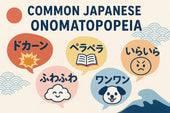
Common Japanese Onomatopoeia: Essential Words You’ll Hear Everywhere
If you spend any time in Japan, you’ll hear onomatopoeia everywhere: on TV, in everyday conversations, in manga, and ...
-

How to Say “To Increase” and “To Decrease” in Japanese: With Examples
You've noticed there are multiple ways to say “to increase” or "to decrease" in Japanese. Between transitive and intr...
-

How to Say "Police Officer" in Japanese: Common Terms and Slang
There are several ways to say "police officer" in Japanese, and each one has a different level of formality and usage...
-
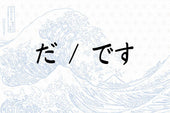
Understanding だ (da) and です (desu) in Japanese: Meaning and Usage
When learning Japanese, one of the first things you’ll come across is だ (da) and です (desu). These words don’t have a ...
-
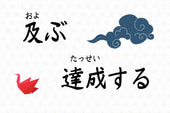
Difference Between 及ぶ (およぶ) and 達成する (たっせいする)
Both 及ぶ and 達成する can relate to "reaching" or "achieving" something, but they have distinct nuances and usage contexts...
-

JLPT N5 Study Guide: A Beginner's Roadmap to Acing the Test
If you’ve just started learning Japanese and are aiming to ace the JLPT N5, you’ll need a solid study guide to help y...
-

Beginner's Guide to Japanese Particles: Learn the Basics
TL;DR: Japanese particles are crucial for structuring sentences, acting like conjunctions or prepositions in English...
-

JLPT N5 Vocabulary List - All 748 Words You Need to Know
Vocabulary is the foundation of any language, and Japanese is no exception. The more you know, the better. Over time ...
-
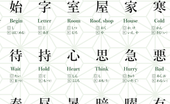
JLPT N4 Kanij List - All 176 Characters You Need To Know
After mastering the JLPT N5 kanji, you're ready to take your Japanese kanji game to the next level. JLPT N4. Let's go...
-
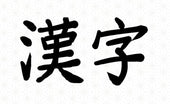
Kanji For Kanji - 漢字
Inception time. Which kanji compose the kanji of "kanji"? The kanji for "kanji" is actually pretty straightforward. I...
-

How to Memorize Katakana Easily: 9 Tips for Beginners
For those diving into Japanese, mastering hiragana and katakana is the first significant challenge. While hiragana o...
-
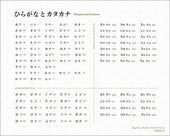
Complete Hiragana and Katakana Chart With All 112 Characters
The very first step for everybody who wants to learn Japanese is to study the hiragana and katakana chart (before lea...
-
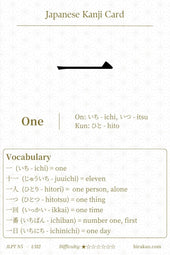
JLPT N5 Kanji: Kanji For One 一 (ichi)
Probably one the most simple kanji to remember, the kanji for 'one' is simply written '一'. Let's see its readings and...
-
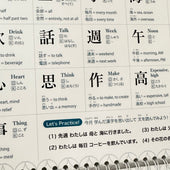
How Long Does It Take to Learn Kanji? A Beginner's Guide
Ask any Japanese student what's the scariest part of learning the language, and they'll say kanji. And they're righ...
-
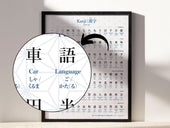
Is it Necessary to Learn Kanji? The Last Answer You'll Ever Need
Many beginners in Japanese wonder whether they should really learn kanji. I know this, because I also wondered when s...
-

How Long Does it Take to Learn Hiragana and Katakana?
As a beginner in Japanese, your first step is diving into the alphabets of Hiragana and Katakana. These are the build...
-

13 Best YouTube Channels to Learn Japanese, From Beginner to Intermediate
YouTube can be an incredible resource for learning Japanese. And best of all, it's free. So we've compiled a list of ...
-
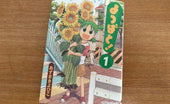
Top 10 Manga for Japanese Language Learners: From Beginners to Intermediates!
If you're learning Japanese, chances are you're interested in manga. So instead of reading texts about Tanaka-san s...
-
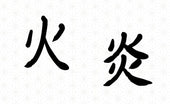
Kanji for 'Fire' in Japanese: 火 or 炎?
Welcome to our enlightening exploration of Japanese kanji! Today, we're igniting our understanding of a primal force ...
-
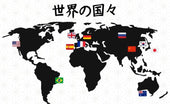
The Complete Guide to Country Names in Japanese: Say and Pronounce Them Right!
Whether you're planning a trip, learning Japanese, or just curious about how different countries are represented in a...
-
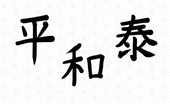
Kanji for Peace: 平, 和, 泰 - The Symbols of Harmony
You might be wondering what are the Japanese symbols for 'Peace'. In this article, we're diving deep into this univer...
-
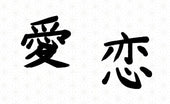
Kanji for 'Love': How and When to Use 愛 and 恋
Welcome to our journey into the world of Japanese kanji! Today, we're delving into one of the most heartwarming and p...
-
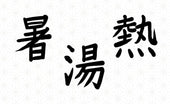
Kanji for 'Hot' in Japanese: 暑, 湯, and 熱 - A Comprehensive Guide
Welcome to our journey into the world of Japanese kanji! Today, we're going to delve into an exciting and essential c...
-
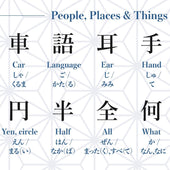
JLPT N5 Kanji List - All 112 Characters You Need To Know
Below we've listed all 112 JLPT N5 level kanji along with their English meaning, readings, and two accompanying vocab...

![この・その・あの・どの – Using ‘This / That / Which’ with Nouns in Japanese [JLPT N5]](http://hirakan.com/cdn/shop/articles/acd351ada3fe4b04ae86de788a3350b8.jpg?v=1766305268&width=170)
![これ・それ・あれ・どれ – Saying ‘This / That / Which One’ in Japanese [JLPT N5]](http://hirakan.com/cdn/shop/articles/this-that.jpg?v=1766305107&width=170)
![か~か – Expressing Choices like “A or B” in Japanese [JLPT N5]](http://hirakan.com/cdn/shop/articles/choices.jpg?v=1766304827&width=170)
![~から~まで – Saying “From A to B” in Japanese [JLPT N5]](http://hirakan.com/cdn/shop/articles/from-AtoB.jpg?v=1765093560&width=170)
![まで – Expressing “Until” and “Up To” in Japanese [JLPT N5]](http://hirakan.com/cdn/shop/articles/until-up-to.jpg?v=1765093405&width=170)
![から – Expressing “Because” and “From/Since” in Japanese [JLPT N5]](http://hirakan.com/cdn/shop/articles/because-from_since.jpg?v=1765093285&width=170)
![や – Listing Examples with “And, Among Others” in Japanese [JLPT N5]](http://hirakan.com/cdn/shop/articles/and.jpg?v=1765093138&width=170)
![か – Forming Questions and Saying “Or” in Japanese [JLPT N5]](http://hirakan.com/cdn/shop/articles/ka-questions.jpg?v=1763787134&width=170)
![も – Saying “Also” and “Too” in Japanese [JLPT N5]](http://hirakan.com/cdn/shop/articles/mo-also-too_99f908e6-78d0-4f82-8319-391ef42764bc.jpg?v=1763787251&width=170)
![と – Linking 'And', 'With', and Quotations in Japanese [JLPT N5]](http://hirakan.com/cdn/shop/articles/to-and-with-quotation.jpg?v=1763265110&width=170)
![で – Marking Where and How an Action Happens in Japanese [JLPT N5]](http://hirakan.com/cdn/shop/articles/de-where-how-action-happens.jpg?v=1763264973&width=170)
![へ – Marking Direction ‘Toward’ in Japanese [JLPT N5]](http://hirakan.com/cdn/shop/articles/he-marking-direction.jpg?v=1762667986&width=170)
![に – Marking Time, Destinations, and Recipients in Japanese [JLPT N5]](http://hirakan.com/cdn/shop/articles/ni-marking-destination.jpg?v=1762667846&width=170)
![の – Possession and Noun Linking in Japanese [JLPT N5]](http://hirakan.com/cdn/shop/articles/no-possession-and-noun-linking.jpg?v=1761961297&width=170)
![を – Marking the Direct Object in Japanese [JLPT N5]](http://hirakan.com/cdn/shop/articles/o-direct-object.jpg?v=1761960990&width=170)
![が – Marking the Subject ('Who/What') in Japanese [JLPT N5]](http://hirakan.com/cdn/shop/articles/ga-subject-marker_60f30f70-6ca5-47ee-9a00-3646195d7d3c.jpg?v=1761386355&width=170)
![は (wa) – Topic Marker and Contrast in Japanese [JLPT N5]](http://hirakan.com/cdn/shop/articles/wa-topic-marker.jpg?v=1761385996&width=170)
![じゃない・ではありません – Expressing 'Is/Was Not' in Japanese [JLPT N5]](http://hirakan.com/cdn/shop/articles/janai-dehaarimasen_2594963b-531e-4f4d-a9b0-361010e0a720.jpg?v=1760865884&width=170)























